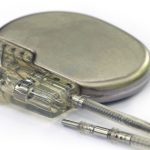Aside from being a store of value, gold has multiple engineering, scientific, and industrial uses. Some of these applications are of enormous scale, but others are astonishingly small. For example, did you know gold is used to prepare specimens for scanning electron microscopes (SEMs)?
An SEM produces magnified images of a sample by scanning it in a vacuum with a beam of accelerated electrons. The electrons interact with atoms in the sample, producing various signals that the SEM analyzes to determine information about the sample’s surface topography and composition. The SEM then uses this information to create a digital image.
Electrically conductive specimens interact better with the SEM’s electron beam, resulting in a clear image. Non-conductive specimens, however, will build up an electrostatic charge that interferes with the signals that the SEM uses to create the image. To remedy this, non-conductive specimens are sputter coated with an ultrathin layer of gold, which is highly conductive.
Without the gold coating, non-conductive samples are mostly invisible to electron microscopes. Thanks to gold, scientists can clearly examine whole organisms, tissue samples, and other types of biological specimens.
Image: gold-coated insects prepped for a scanning electron microscope











